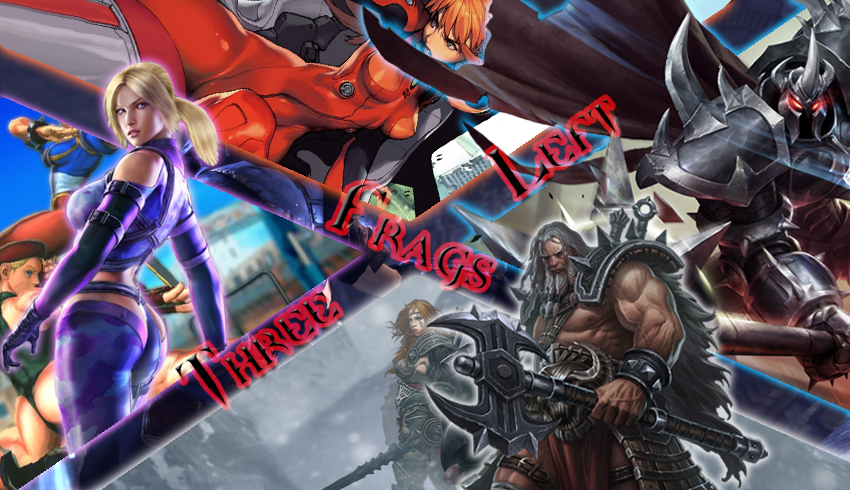"Be not deceived with the first appearance of things, for show is not substance" - English ProverbYeah that. There is perhaps nothing more irritating in a game than bad interface design. Seriously. If there is one thing that has driven me off more games than I can count, it would have to cluttered, insensible and the outright confusing design of game interfaces and menus, something which should ideally be a walk in the park.
In this week's lecture we were given a brief run through as to what effective interface design means. Using both Nielsen's but primarily Norman's model of usability principles, user interface design was explained in simple generic terms where similarities were evident. Having gathered what was described in the lecture, I shall attempt to apply this knowledge and break down a user interface that has been bugging me (and many others) as of late.
Now, I am a big fan of Unreal Tournament, so it is important that the reader understand how much it pains me to have to draw criticism to its latest installment UT3. As much as I am a fan of the game, I will not attempt to shroud or even ignore some of the bad design decisions that this game suffers from. I attempt to avoid 'fanboism' as much as possible and this post should be evidence of such an action.
Below: UT3 - Menu

My most major concern with the design of UT3 is unfortunately the user interface. This interface is, as you can see, rather aesthetically pleasing. Its animated menus and general theme are both excellent. To be quite honest with you, I have absolutely no problem with the look of the menu interface at all. But that's the thing, its all looks. As a student of IT and programmer of very dodgy programs, I do not fall head over heels for how something looks, but rather how something functions. The problem with the UT3 menu is that it falls short in this area, especially considering the platform it is on.
The current UT3 menu design works quite functionally ... on consoles. It is in fact the same menu used in the console versions of the game, but it is not a port of the game. It was made concurrently alongside the XBoX 360 version of the game which the menu works perfectly for. However, for some reason Epic Games decided this menu would work well enough for the PC version, which is where they made their mistake. On PC, this menu suffers from terrible navigation and information errors, often taking up to 3 to 4 page transitions to get to a specific setting which simply has the option to be enabled or disabled. The nature of the PC gamer, which I must say I am primarily, is that the speed and accuracy of using a mouse and keyboard is something we take for granted. The menu is too large, too basic and does not make use of enough eye space that PC users generally have more of (i.e. closer to the screen). The need for panning options over multiple screens for the console version is unnecessary for the PC version. When you take into consideration that the PC version is in fact more customisable than the console, the plethora of additional options necessitates the need for a better streamlined and comprehensive menu design. Currently the navigation in the implemented menu design is too arduous for the average PC user, considering the tools and options available to them.
Further proof of community disapproval:
Beyond Unreal Forum Post
Beyond Unreal Poll
It also take a bloody long time to load. Since when did menus need a loading time?
Below: UT99 - Menu

Epic Games did not always have this problem however. As you can see in the original UT99 menu design, they had an excellent Uwindows theme going on which was basically perfect in every way imaginable. Everything, from video options to setting up matches was less than 2 clicks away and all available to the user at any time. The ability to do both at once was also possible, something which was continuously helpful when you were indecisive about preferences. Epic have even admitted that designing UT3 for both PC and console at the same time did hamper the individuality that the game should have on each platform, even though it was an excellent business decision.
Another quick example I can also bring up is the ingame user interface in WoW. Not discussing damage/threat meters, item or location mods, the user interface in this game is considered by many to be lacklustre and even a bit excessively cluttered. I am constantly ridiculed for using this default interface, but there are many people like myself who still use it. The reason? It works. It is functional, and even though it may look unimpressive it does the job. It is because of this reason, the simple fact that it is functional, that I have no quarrels with it. Aesthetics are not my primary concern.
Below: WoW - Default UI

How does this affect my ideas? From a scenario such as this I can reinforce something that I have always believed in. No matter how good something may look, if it doesn't function well or ingeniously it is not worth much in the long run. Although the interface design for our game Crusaders does not need to be aesthetically or even visually pleasing, it needs to be basic but comprehensive enough for the user to understand. Interface such as the Google franchise of media (search engine, chat, email etc.) is a classic example of what we should be striving for. This sort of interface design is something we shall be undertaking in the next couple of weeks.
















